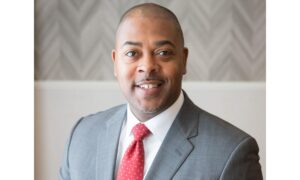Harrison Peters, co-founder of Men of Color in Educational Leadership (MCEL), has witnessed firsthand the disproportionate number of majority groups that dominate education leadership positions. His organization works to bridge the racial gap by advocating for diverse representation in school district leadership and supporting affiliated members looking to advance their school careers.
Peters emphasizes the urgency of diversifying educational leadership role models, which can help create equity in the workplace, translates to better student outcomes, and empowers all underrepresented students to pursue their ambitions.
Equity For Teachers and Administrators
Peters believes that a diverse leadership in education can promote an equitable learning environment for all students, regardless of race or ethnicity, as well as teachers. He explains that by diversifying educational roles, teachers and administrators of color will have the chance to be role models and mentors for minorities.
“Teachers and staff should all have the opportunity to see people in leadership roles who look like them and represent their culture,” says Peters. This could lead to improved student and teacher outcomes, resulting in a more diverse set of ideas and perspectives informing educational decisions.
Unfortunately, even today there is a large racial disparity among school administrators. Statistics show that the most common ethnicity of school principals is White at just under 65%, followed by Hispanic or Latino at 14.4%, and Black or African American at 11.6%. The Asian community is even less represented at just 4.4%. These statistics make it clear that there is still a lot of work to be done in order to achieve a more diverse and equitable educational system.
Lower Turnover Rates
With turnover rates for teachers at a whopping 16% nationwide, with flexibility, or lack thereof, being a major contributing factor. A1 lack of flexibility, low pay, stagnant education systems, and diversity in leadership are all reasons teachers leave the profession in droves. Peters argues that by diversifying leadership positions and promoting a culture of acceptance, better teacher retention can be achieved. He believes that teachers will stay if they see themselves being represented and accepted at higher levels of the educational system.
Peters says, “Imagine, what a difference it would make if teachers would continue to pursue their careers, knowing reaching the highest level of educational leadership is achievable. It’s time to make a change, and that starts with diversifying the roles at the top.” For teachers that have spent years of their lives trying to make a difference in the classroom, it’s time for them to have more representation in leadership roles.
Cultural Understanding
From national holidays being changed, such as the Los Angeles Unified School District abolishing Columbus Day and replacing the holiday with Indigenous Peoples Day, to an increased understanding of cultural customs, diversifying educational leadership roles can promote inclusion and acceptance.
“We have students whose parents may not speak perfect English, or have a different skin color and religious beliefs than the majority of those in charge,” says Peters. “Who can they turn to when they need guidance? We can’t expect these students to feel accepted and supported by a homogenous education system, and the same can be said of all students no matter their race, gender, or religion.”
By diversifying educational leadership roles, knowledge of different cultures can be incorporated into the curriculum, allowing communities of color to better understand their children’s school experience. Peters believes this will lead to improved student performance in the classroom and can help increase the graduation and college attendance rates. Cultural tone-deafness is no longer an option when it comes to providing a quality education for all students.
Empowering Emerging-Majority Students
In addition to creating equal opportunities for teachers and administrators, Peters believes that having diverse role models in education can be instrumental in inspiring young emerging-majority students to stay in school and pursue their educational goals. By having a strong representation of teachers and administrators of color in leadership roles, students can feel empowered to strive for success, even when they come from disadvantaged backgrounds.
Studies show that even one teacher can make a difference, with black students who had one Black teacher 13% more likely to enroll in college. Imagine the difference having black administrators would make! It isn’t just about improved college attendance rates, but also about providing a sense of hope for students and families that have been historically overlooked by the educational system.
The Time for Change is Now
The time is now to make changes in education leadership— and it starts with diversifying leadership roles. With diverse voices at the table, education systems can better reflect the needs of all students and create an environment where everyone feels supported, respected, and represented. There are no limits to what we can achieve when we stand together, regardless of race or ethnicity. As Harrison Peters points out, achieving racial equality begins with making sure those who are in charge represent the people they serve, so let’s make sure everyone has a seat at the table.
About Harrison Peters
Harrison Peters is the co-founder and CEO of Men of Color in Educational Leadership (MCEL), where he works united with other educational leaders of color to bring about equity in educational leadership. He has a master’s in educational leadership from Nova Southeastern University, and he completed a specialist’s degree in school transformation through the University of South Florida, and has worked to represent various school districts including Chicago Public Schools, Hillsborough County Schools, and Houston Independent School District.

































